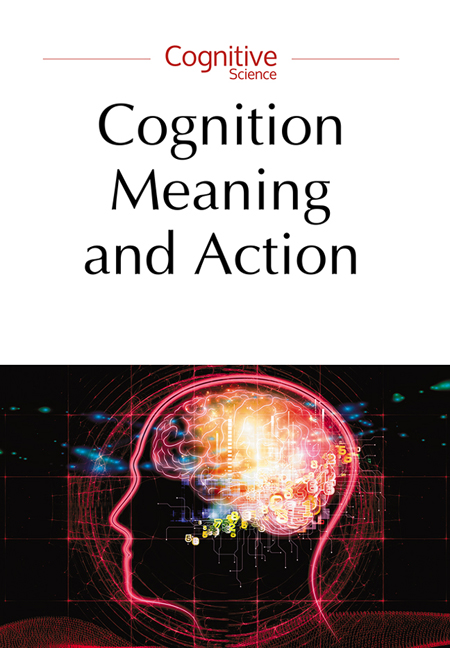Book contents
- Frontmatter
- Contents
- The crossroads of cognitive science
- Cognitive science: From computers to ant hills as models of human thought
- Two procedures expanding a linguistic competence
- Neurobiological basis for emergence of notions
- Similarity as distance: Three models for scientific conceptual knowledge
- The Approximate Numbers System and the treatment of vagueness in conceptual spaces
- Communication, cognition, and technology
- To tell and to show: The interplay of language and visualizations in communication
- Semiotics, signaling games and meaning
- Out of the box thinking
- The everyday of decision-making
- Short- and long-term social interactions from the game theoretical perspective: A cognitive approach
- Notes about Authors
Similarity as distance: Three models for scientific conceptual knowledge
Published online by Cambridge University Press: 10 January 2018
- Frontmatter
- Contents
- The crossroads of cognitive science
- Cognitive science: From computers to ant hills as models of human thought
- Two procedures expanding a linguistic competence
- Neurobiological basis for emergence of notions
- Similarity as distance: Three models for scientific conceptual knowledge
- The Approximate Numbers System and the treatment of vagueness in conceptual spaces
- Communication, cognition, and technology
- To tell and to show: The interplay of language and visualizations in communication
- Semiotics, signaling games and meaning
- Out of the box thinking
- The everyday of decision-making
- Short- and long-term social interactions from the game theoretical perspective: A cognitive approach
- Notes about Authors
Summary
Introduction
Starting with Minsky (1975) and more widely recognized since Barsalou (1992), (dynamic) frames have become a well-accepted tool to model conceptual knowledge. We begin our comparison with its predecessor model, the feature list, and trace its development into the (dynamic) frame model. Subsequently, we summarize extant frame-style reconstructions of taxonomic change as a paradigmatic application within history and philosophy of science, thus addressing the incommensurability of frameworks, or world-views, from a cognitive historical perspective.
We hold that a frame is a sophisticated feature list whose application centrally supports the claim that historically successive taxonomies are comparable. But we criticize that the frame model yields little insight beyond taxonomic change. Introducing conceptual spaces as an alternative model, we discuss dimensions, their combinations, how to recover frames by analogue expressions, similarity as geometric distance across diachronically varying spaces, and the status of scientific laws.
Feature lists, frames, spaces
Originating in Aristotelian philosophy (Taylor, 2003), the feature list constitutes both an entrenched and a somewhat outdated tool for reconstructing conceptual knowledge. Paradigmatically instantiated by taxonomic knowledge, e.g., in biology, it can be summarized by three assumptions: (i) the representation of a concept provides a summary of the class of its instances (i.e., the things falling under the concept); (ii) the binary features representing a concept are individually necessary and jointly sufficient to define the concept; (iii) features are nested in subset relations such that, if concept X is a subset of concept Y, then the defining features of Y are nested in those of X. Such features are regularly referred to as defining or essential (see Kuukkanen, 2006: 88).
On the classical view, combinations of binary features (aka attributes) provide a definition of that which falls under, or instantiates, a concept if and only if the features are present in, or true of, the thing. Features are normally rendered in natural language, typically by nouns or adjectives. The classical example sees MAN being analyzed as [+biped, +rational, +animal]. Standardly, problems arise upon observing, for instance, that a Para-Olympic athlete may thus fail to instantiate MAN – which is somewhat absurd. Short of allowing ad hoc modifications, or throwing individually necessary and jointly sufficient features over board, however, the absurdity is not easily remedied.
- Type
- Chapter
- Information
- Cognition, Meaning and ActionLodz-Lund Studies in Cognitive Science, pp. 63 - 86Publisher: Jagiellonian University PressPrint publication year: 2015



